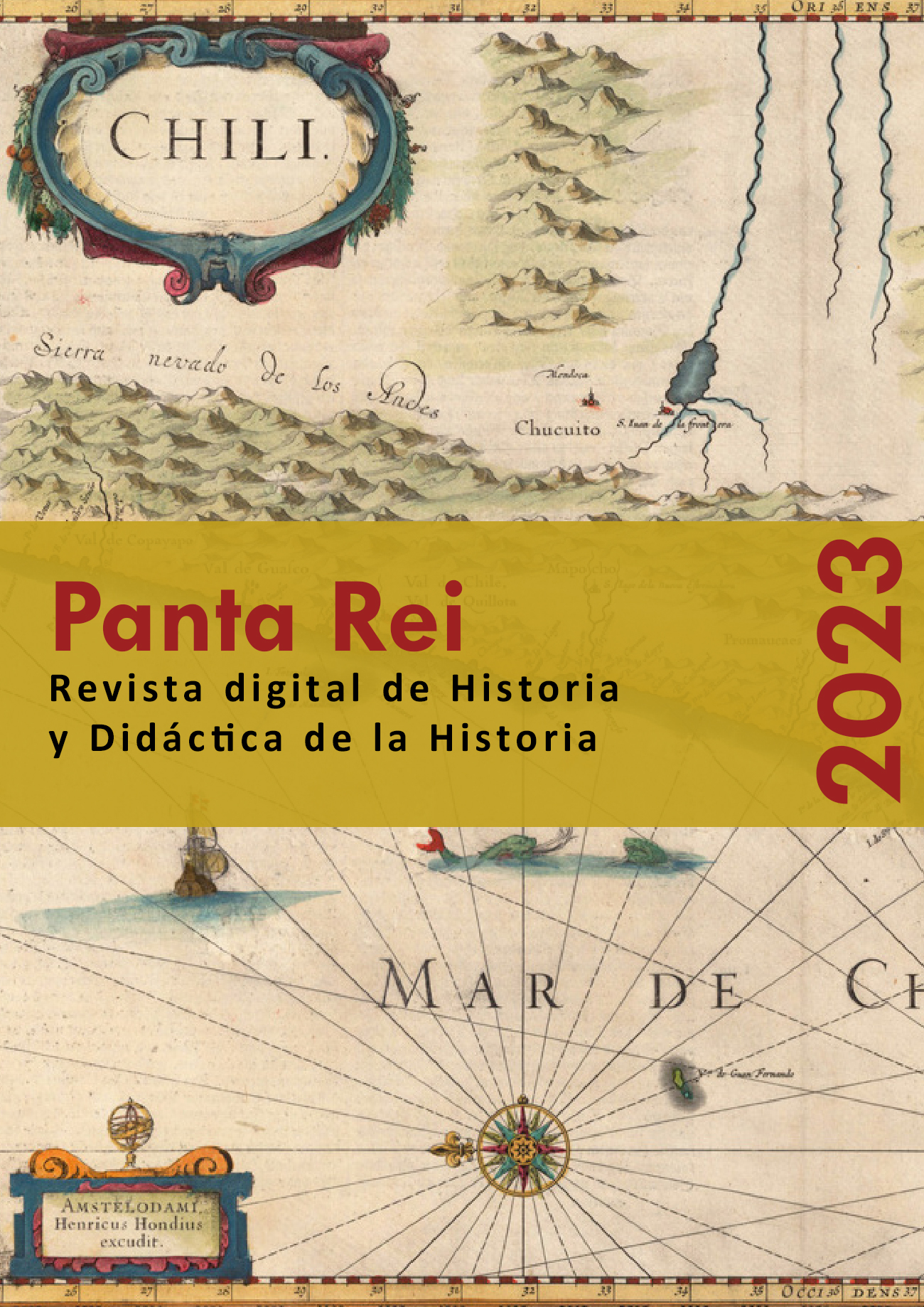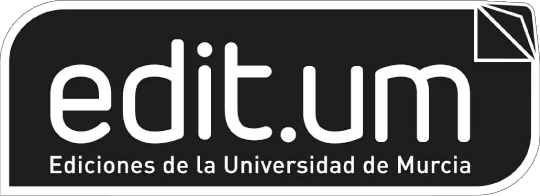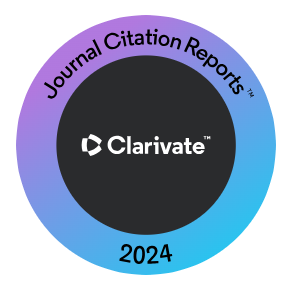Comprehension of historical primary sources in high school. A study on the reading of multiple contradictory text of the Civil War
Supporting Agencies
- Ministerio de Ciencia e Innovación de España bajo el proyecto PID2019-104537GB-I00
Abstract
Intertextual comprehension is the ability to integrate information from several texts and sources of information. This competence is key in the development of reasoning, although it is challenging for our students. This study evaluates the impact of providing intertextual or textual comprehension aids in the first year of high school (seventeen-year-old students) when they must understand a historical phenomenon with multiple perspectives. They read 5 texts with conflicting perspectives on the Civil War and, afterwards, they wrote an essay, completed a comprehension test and a recall task of sources.Students who received the intertextual aids wrote a more integrated essay than those who received the textual comprehension aids. There were no differences in individual text comprehension or source recall. These results indicate the necessity of helping to make connections between documents for the students to integrate contradictory historical information into a coherent interpretative account.
Downloads
-
Abstract908
-
PDF (Español (España))464
-
EPUB (Español (España))152
References
Achugar, M., y Schleppegrell, M. J. (2005). Beyond connectors: The construction of cause in history textbooks. Linguistics and Education, 16(3), 298–318. https://doi.org/10.1016/j.linged.2006.02.003
Afflerbach, P., Cho, B‐Y., Kim, J-Y., Crassas, M. y Doyle, B. (2013). Reading: What Else Matters Besides Strategies and Skills? The Reading Teacher. https://doi.org/66. 10.1002/TRTR.1146.
Alexander, P. A. (2003). Profiling the developing reader: The interplay of knowledge, interest, and strategic processing. En C. Fairbanks, J. Worthy, B. Maloch, J. Hoffman, y D. Schallert (Eds.), The Fifty-first Yearbook of the National Reading Conference (pp. 47–65). National Reading Conference.
Alexander, P. A. (2006). The path to competence: A lifespan developmental perspective on reading. Journal of Literacy Research, 37, 413–436.
Allington, R. L. y McGill-Franzen, A. (2017) Comprehension difficulties and struggling readers. En S. Israel (Ed.) Handbook of research on Reading comprehension (Second Edition) (pp.271-292). The Guilford Press.
Barzilai, S., y Ka’adan, I. (2017). Learning to integrate divergent information sources: the interplay of epistemic cognition and epistemic metacognition. Metacognition and Learning, 12(2), 193–232. https://doi.org/10.1007/s11409-016-9165-7
Barzilai, S., Zohar, A. R., y Mor-Hagani, S. (2018). Promoting Integration of Multiple Texts: A Review of Instructional Approaches and Practices. Educational Psychology Review, 30(3), 973–999. https://doi.org/10.1007/s10648-018-9436-8
Brand-Gruwel, S., Wopereis, I., y Walraven, A. (2009). A descriptive model of information problem solving while using internet. Computers and Education, 53(4), 1207–1217. https://doi.org/10.1016/j. compedu.2009.06.004.
Bråten, I., Britt, M. A., Strømsø, H. I., y Rouet, J. F. (2011). The role of epistemic beliefs in the comprehension of multiple expository texts: Toward an integrated model. Educational Psychologist, 46(1), 48–70. https://doi.org/10.1080/00461520.2011.538647
Britt, M. A., y Aglinskas, C. (2002). Improving students’ ability to identify and use source information. Cognition and Instruction, 20(4), 485–522. https://doi.org/10.1001/jama.1981.03320080034024
Britt, M. A., Rouet, J.-F., y Braasch, J. L. (2013). Documents as entities: Extending the
situation model theory of comprehension. En M. A. Britt, S. R. Goldman, y J.-F.
Rouet (Eds.). Reading–From words to multiple texts (pp. 160–179). Routledge.
Britt, M. A., y Sommer, J. (2004). Facilitating textual integration with macro-structure focusing tasks. Reading Psychology, 25(4), 313–339. https://doi.org/10.1080/02702710490522658
Cercadillo, L., Chapman, A., y Lee, P. (2017). Organizing the past: Historical accounts, significance and unknown ontologies. In M. Carretero, S. Berger, y M. Grever (Eds.), Palgrave handbook of research in historical culture and education (pp. 529–552). Palgrave Macmillan.
Carretero, M., Jacott, L., Limón, M., López, A. y León, J. A. (1994). Historical Knowledge: Cognitive and Instructional implications. En Carretero, M. y Voss, J. F. (eds.). Cognitive and instructional processes in history and the social sciences, pp. 357-376. Lawrence Erlbaum.
Chapman, A. y Woodcock, J. (2006). Mussolini’s Missing Marbles: Simulating History at GCSE. Teaching History, 124, 17–26.
Chinn, C. A., Rinehart, R. W., y Buckland, L. A. (2014). Epistemic cognition and evaluating information: applying the air model of epistemic cognition. En D. Rapp y J. Braasch (Eds.). Processing inaccurate information (pp. 425–454). MIT Press.
Darlington, R. B., y Hayes, A. F. (2017). Regression Analysis and Linear Models. Concepts, applications and implementation. Guilford press.
Darowski, E. S., Patson, N. D., y Helder, E. (2016). Implementing a synthesis tutorial to improve student literature reviews. Behavioural and Social Sciences Librarian, 35(3), 94–108. https://doi.org/10.1080/01639269.2016.1243437.
DECRETO 40/2022, de 29 de septiembre, por el que se establece la ordenación y el currículo del bachillerato en la Comunidad de Castilla y León. https://bocyl.jcyl.es/boletines/2022/09/30/pdf/BOCYL-D-30092022-4.pdf
De La Paz, S. (2005). Effects of Historical Reasoning Instruction and Writing Strategy Mastery in Culturally and Academically Diverse Middle School Classrooms. Journal of Educational Psychology, 97(2), 139–156. https://doi.org/10.1037/0022-0663.97.2.139
De La Paz, S., Wissinger, D. R., Gross, M., y Butler, C. (2022). Strategies that promote historical reasoning and contextualization: A pilot intervention with urban high school students. Reading and Writing, 35, 353–376. https://doi.org/10.1007/s11145-021-10183-0
De La Paz, S., y Felton, M. K. (2010). Reading and writing from multiple source documents in history: Effects of strategy instruction with low to average high school writers. Contemporary Educational Psychology, 35(3), 174–192. https://doi.org/10.1016/j.cedpsych.2010.03.001
González-Lamas, J., Cuevas, I., y Mateos, M. (2016). Argumentar a partir de fuentes: Diseño y evaluación de un programa para mejorar la argumentación escrita y su impacto en función de las creencias acerca de la escritura académica que mantienen los estudiantes. Infancia y Aprendizaje, 39(1), 49–83. https://doi.org/10.1080/02103702.2015.1111606.
Hagen, Å. M., Braasch, J. L. G., y Bråten, I. (2014). Relationships between spontaneous note-taking, self-reported strategies and comprehension when reading multiple texts in different task conditions. Journal of Research in Reading, 37(SUPPL1). https://doi.org/10.1111/j.1467-9817.2012.01536.x
Hilbert, T. S., y Renkl, A. (2008). Concept mapping as a follow-up strategy to learning from texts: what characterizes good and poor mappers? Instructional Science, 36(1), 53–73. https://doi.org/10.1007/s11251- 007-9022-9.
Kobayashi, K. (2009). Comprehension of relations among controversial texts: Effects of external strategy use. Instructional Science, 37(4), 311–324. https://doi.org/10.1007/s11251-007-9041-6
Leu, D. J., Kinzer, C. K., Coiro, J., Castek, J., y Henry, L. A. (2013). New literacies: a dual level theory of the changing nature of literacy, instruction, and assessment. En D. E. Alvermann, N. J. Unrau, y R. B. Ruddell (Eds.), Theoretical models and processes of reading (6th ed., pp. 1150–1181). Newark: International Reading Association. (pp. 425–454). MIT Press.
Lee, K., Cameron, C. A., Xu, F., Fu, G., y Board J. (1997). Chinese and Canadian Children’s Evaluations of Lying and Truth Telling: Similarities and Differences in the Context of Pro- and Antisocial Behaviours. Child Development, 68(5), 924–934. https://doi.org/10.2307/1132042
Ley Orgánica 3/2020, de 29 de diciembre, por la que se modifica la Ley Orgánica 2/2006 (LOMLOE), de 3 de mayo, de Educación. Boletín Oficial del Estado 340, de 30 de diciembre de 2020 (pp. 122868-122953). https://www.boe.es/eli/es/lo/2020/12/29/3
McCrudden, M. T., Magliano, J. P., y Schraw, G. (2010). Exploring how relevance instructions affect personal reading intentions, reading goals and text processing: A mixed methods study. Contemporary Educational Psychology, 35(4), 229–241. https://doi.org/10.1016/j.cedpsych.2009.12.001
McCrudden, M. T., y Schraw, G. (2007). Relevance and goal-focusing in text processing. Educational Psychology Review, 19(2), 113–139. https://doi.org/10.1007/s10648-006-9010-7
Meyer, B. J. F. (1985). Prose analysis: purposes, procedures and problems. En B. K. Britton y J. B. Black (Eds.), Understanding expository text. Routledge.
Monte-Sano, C. (2010). Disciplinary literacy in history: An exploration of the historical nature of adolescents’ writing. Journal of the Learning Sciences, 19(4), 539–568. https://doi.org/10.1080/10508406.2010.4810
Prieto, J. A, Gómez, C. J. y Miralles, P. (2013). El uso de fuentes primarias en el aula y el desarrollo del pensamiento histórico y social. Una experiencia en Bachillerato. Clío, 39. ISSN: 1139-6237. http://clio.rediris.es
Reisman, A. (2012). Reading like a historian: A document-based history curriculum intervention in urban high schools. Cognition and Instruction, 30(1), 86–112. https://doi.org/10.1080/07370008.2011. 634081
Rouet, J. F., Mason, R. A., Perfetti, C. A., y Britt, M. A. (1996). Using Multiple Sources of Evidence to Reason about History. Journal of Educational Psychology, 88(3), 478–493. https://doi.org/10.1037/0022-0663.88.3.478
Rouet, J.-F. (2006). The Skills of Document Use. In The Skills of Document Use: From Text Comprehension to Web-Based Learning. Routledge. https://doi.org/10.4324/9780203820094
Rouet, J. F., y Britt, M. A. (2011). Relevance processes in multiple document comprehension. En M. T. McCrudden, J. P. Magliano, y G. Schraw (Eds.), Text Relevance and Learning from Text (pp. 19–52). Information Age.
Schleppegrell, M., y de Oliveira, L. (2006). An integrated language and content approach for history teachers. Journal of English for Academic Purposes, 5(1), 254–268. https://doi.org/10.1016/j.jeap. 2006.08.003
van Dijk, T. A., y Kintsch, W. (1983). Strategies of Discourse Comprehension. Academic Press.
van Driel, J., van Driel, J. y van Boxtel, C. (2022) Writing about the significance of historical agents: the effects of reading and writing instruction. Reading and Writing. https://doi.org/10.1007/s11145-022-10404-0
van Drie, J., y Van Boxtel, C. (2008). Historical reasoning: Towards a framework for analyzing students’ reasoning about the past. Educational Psychology Review, 20(2), 87–110. https://doi.org/10.1007/s10648-007-9056-1
Voss, J. F., Carretero, M., Kennet, J. y Silfies, L. N. (1994). The collapse of the Soviet Union: A case study in causal reasoning. En J. F. Voss y M. Carretero (Eds.), Cognitive and instructional processes in history and the social sciences, (pp. 403-429). Erlbaum.
Copyright (c) 2023 Álvaro Rosales García, Javier Rosales Pardo, María García-Serrano, J. Ricardo García Pérez

This work is licensed under a Creative Commons Attribution-ShareAlike 4.0 International License.
All the contents published in this journal are subject to an Attribution-ShareAlike 4.0 International (CC BY-SA 4.0) Creative Commons License. You are free to: Share — copy and redistribute the material in any medium or format, Adapt — remix, transform, and build upon the material, for any purpose, even commercially. Under the following terms:
Attribution — You must give appropriate credit, provide a link to the license, and indicate if changes were made. You may do so in any reasonable manner, but not in any way that suggests the licensor endorses you or your use.
ShareAlike — If you remix, transform, or build upon the material, you must distribute your contributions under the same license as the original.
Full text of the license is available in: Creative Commons License 












